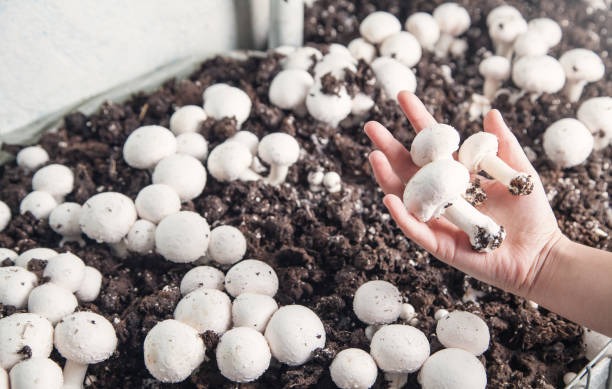Growing mushrooms at home or on a larger scale can be an enriching experience. However, the success of this process often hinges on choosing the right mushroom-growing blend. With so many choices available, figuring out what will work best can be overwhelming. This guide breaks down the top ways to determine which substrate fits specific growing needs, with clear, easy-to-understand explanations to make the decision smoother.
Understand the Mushroom Variety and Its Needs
The choice of mushroom substrate depends mainly on the cultivated type. Each variety prefers different materials to grow efficiently and produce healthy fruiting bodies. For instance, oyster mushrooms do well with straw or sawdust, while shiitake often thrives on hardwood chips. Understanding the mushroom’s preference is the first step toward a more successful yield. Matching the mushroom type with its ideal environment helps create the right conditions. This prevents slow growth or poor yields and encourages healthier development overall.
Evaluate the Nutrient Content of the Substrate
A suitable mushroom-growing blend needs the proper nutrients to feed the growing fungus. Some blends are richer in organic matter, giving the mycelium more energy to spread and fruit. Manure-based substrates, for example, offer nitrogen and other essentials for species like button mushrooms. Others, like coir or straw, provide more carbon and are better suited for different strains. Checking the nutritional balance before choosing helps avoid mismatches that could slow colonization. Using a blend tailored to the species ensures better growth and fewer disappointments.
Assess the Level of Contamination Risk
Contamination is one of the most significant setbacks in mushroom growing. The material used as a substrate must be clean, well-prepared, and able to resist unwanted organisms. Sterilized or pasteurized options lower the risk of harmful bacteria or mold taking over. This is especially true for more sensitive mushroom strains that require a cleaner environment. Choosing materials that come pre-treated or are easy to sterilize gives the grower a better start. A clean base helps maintain steady growth and minimizes failures.
Consider the Substrate’s Texture and Water Retention
The texture of the substrate affects airflow and water balance, both vital to mushroom development. Too dense, and oxygen can’t reach the roots; too loose, and moisture won’t hold. A good substrate offers a balance of retaining water while allowing enough air for the mycelium to breathe. Materials like coco coir and vermiculite often provide this balance naturally. Choosing a medium with the right structure helps create a stable environment. This encourages the mushroom network to spread without stress or suffocation.
Could a Ready-to-Use Fruiting Blend Make Growing Mushrooms Easier?
Not everyone has the time or tools to prepare a growing mix from scratch. In such cases, a ready-to-use fruiting substrate can simplify the process while maintaining ideal growing conditions. These blends are often pre-sterilized and balanced with materials like coco coir, vermiculite, and pH stabilizers. They arrive fully hydrated and ready for inoculation, cutting down on setup and cleanup alike. Choosing a pre-mixed option may suit those seeking consistency and ease. It offers a straightforward path to healthy mushroom growth for new growers or anyone managing multiple batches.
Selecting a mushroom substrate isn’t a one-size-fits-all task; it starts with knowing the mushroom’s needs and ends with creating the right environment. Whether choosing straw, sawdust, or a ready-to-use blend, each decision shapes the outcome of the harvest. Rather than focusing only on speed or cost, understanding how each option works makes a real difference. A thoughtful choice often leads to greater satisfaction, better results, and a growing journey that’s as enjoyable as it is fruitful.

